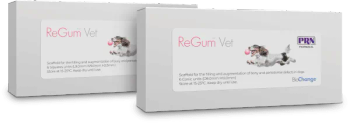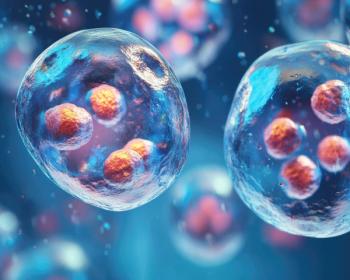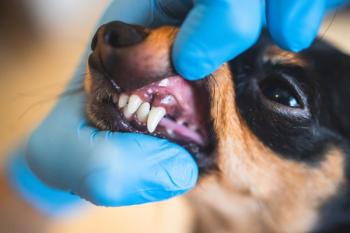
Overview of endodontic therapy (Proceedings)
The indications for root canal therapy is pulpal disease.
The indications for root canal therapy is pulpal disease. Pulpal disease is caused by:
• pulpal hemorrhage
• pulpal exposure
o trauma
o caries
• end stage periodontal disease.
Pulpal hemorrhage, traumatic exposure of the pulp and to a limited extent caries can be dealt with by conventional endodontic therapy. Stage 5 and 6 periodontal disease combined with endodontic disease is much more difficult to deal with by the veterinarian. While endodontic therapy in these cases is usually successful, the tooth is lost from the progression of periodontal disease.
The goals of endodontic therapy are to:
• remove all organic matter from the endodontic system
• fill the endodontic system with appropriate dental materials
• create an apical seal
• create a coronal seal
• restore the crown to function.
The technique for conventional (non surgical) endodontics is as follows:
• preoperative x-ray
• access hole (if needed)
• coronal access hole enlargement
• root canal length measurement
• instrumentation with:
o hedstrom files
o k files
o niti rotary tapers
o pieseoelectric ultrasonic files
• irrigation of canal
o ½ bleach ½ water
o hydrogen peroxide
o saline
• drying
• apical bleeding checks
• gutta percha point check with x-ray
• root canal sealer or cement
• gutta percha point placement — lateral and vertical condensation
• apical check with x-ray
• crown restoration
While most veterinary dentists agree on the technique, major discussions occur on the various agents used in each step. The author prefers to irrigate the canal system with ½ strength (from the bottle) bleach, full strength hydrogen peroxide, and rinse with saline. The endodontic system is irrigated with each agent in an individual syringe with a 1½ inch 22 or 25 ga needle. Care is used when expressing these liquids into the canal so chances of extra apical infusion is minimized.
Drying is accomplished using appropriate length paper points. Old pulp exposures with necrotic or absent pulp will have little if any bleeding. Fresh pulp exposures with vital or "sick" pulp may seep blood through the apex following drying. A single spot of blood on a paper point is acceptable. More than ½ mm apical bleeding on a paper point is not acceptable. Apical bleeding occurs from either apical perforation or inadequate pulp removal. Apical perforation is determined by rechecking working lengths of the endodontic file with x-rays. Incomplete pulp removal is determined when bleeding continues and endodontic file length is correct. If perforation has occurred a "step back" technique is used to create a seat for a larger gutta percha point. If incomplete pulp removal is determined reinstrumentation is performed until bleeding stops. On some occasions this can be time consuming. These are the common problems encountered in endodontic therapy. It is beyond the scope of this paper to list all endodontic complications and their treatments.
Perhaps the single greatest debate among veterinary endodontists is the choice of filling materials. Traditionally, zinc oxide and eugenol (ZOE) has been used in combination with gutta percha points. Recently, calcium hydroxide products have gained favor with glass ionomer products the newest "kid on the block". It matters more that the correct technique is used assuring an apical fill and less which material is used. Attention to detail is the hallmark for successful endodontic therapy. Currently the author favors a calcium hydroxide product (SealApex-Kerr) and conventional gutta percha points where feasible for most procedures.
Gutta percha is available both in conventional points and in heated preparations. It is best for the entry level veterinarian to master placement of standard gutta percha points before attempting to use a heated product. Heated products, regardless of manufacture, are technique sensitive and not forgiving when mistakes are made. Once standard techniques are mastered, Ultrafil, Thermafil, Successfil, or Touch and Heat systems are suitable for veterinary endodontics. The author prefers "SimpliFill" manufactured by Discus Dental for apical plugs.
Another warning to the training veterinary endodontist is to learn how to use hedstrom and k-files. Hedstrom files are strictly push-pull files and if rotated may (usually!) become stuck and disarticulate (previously "separation" or "broken"). K-files are very forgiving rotational instruments and tend not to break. The LightSpeed system sold by Discus Dental is an excellent system for intrumenting both canine teeth and posterior teeth in dogs. Instrument breakage may require surgical endodontics to retrieve the broken end. Obviously it is better to avoid this complication by obeying the rules.
Once the endodontic procedure is finished, crown restoration is the final step. Again, the specific products and techniques used are a personal preference and dictated by each situation. The goal is to maintain function and preserve esthetics. It is beyond the scope of this paper to cover every situation. However, in general the newer hybrid composites are used on non occlusal surfaces where loading is at a minimum. Because composites have poor resistance to shear forces it is best to avoid significant crown build ups that the animal will simply break off. The composites do have improved resistance to compressive forces and thus can be used in the anterior mouth in access holes and coronal fracture sites, whereas full metal crowns are used in high stress areas and in animals who are abusive to their teeth. Kerr's Optibond System or Den Mats Tenure System are good choices for dentin bonding systems. Any hybrid composite will work in the mouth provided the manufactures directions are observed. Clearly, light cure systems are the systems of choice. Chemical cure systems simply take too long to complete.
Full crown restorations are accomplished in five steps:
• crown preparation icluding finish lines
• crown lengthening (if needed)
• impressions with bite registration
• crown fabrication (in the dental lab)
• crown placement (cementation).
Crown preps are done following endodontic therapy (or in rare cases to preserve a vital tooth). Veterinary Dental Techniques by Holmstrom, Frost, and Gammon has an excellent presentation of the various crown prep procedures commonly used in veterinary dentistry and the reader is referred to this text. Following crown preparation impressions are taken of the mouth and tooth with "rubber base" impression material. Polyvinylsolaxane products work will in animals mouths giving very accurate impressions. Alginate impressions are not satisfactory as an impression material for crowns due to dimensional instability. Once taken the impressions are sent to the dental lab for crown fabrication. The author prefers crowns with posts rather than simple crowns over post preparations—they last longer. Also, non precious alloys are used, sometimes with the addition of copper for the "gold" look as per the owners request. Precious alloys tend to be too expensive for most owners and porcelain crowns too fragile.
Finally, the MOST important part of endodontic therapy is radiology. The standard in veterinary dentistry is to radiograph the tooth multiple times during the procedure. Without radiography it is impossible to determine if an apical fill is accomplished. The more compulsive the veterinarian is documenting with x-rays, the higher the success rate the animals will enjoy.
Newsletter
From exam room tips to practice management insights, get trusted veterinary news delivered straight to your inbox—subscribe to dvm360.






